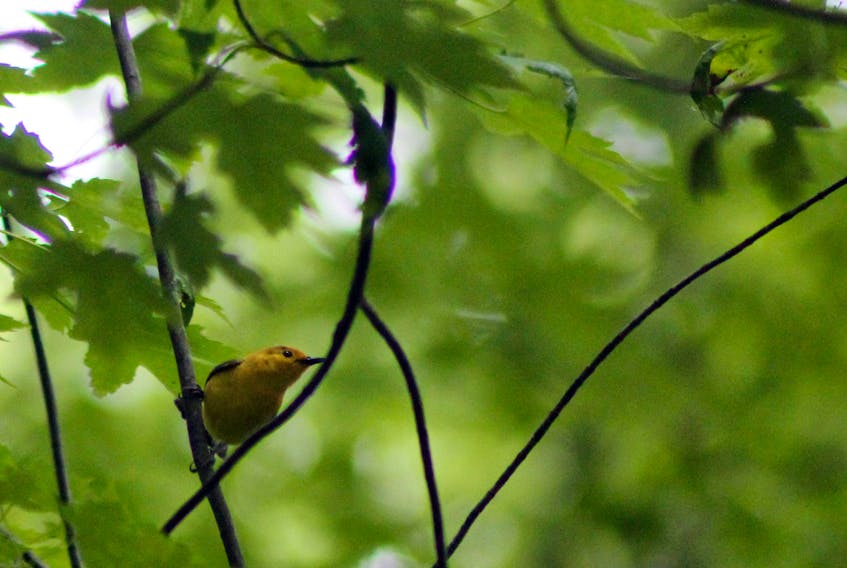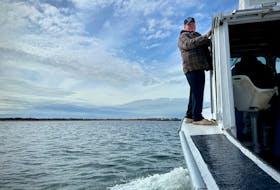The prothonotary warbler ranks among the rarest birds in Canada, but then, it probably always has. Showing a clear preference for the warmth of the United States, its only foray into Canada occurs in the ‘Carolinian’ forests of southern Ontario, a region I visited just last month.
Point Pelee National Park is the southernmost tip of our country, an arrowhead of land reaching boldly into Lake Erie, resting farther south even than northern California. Two-thirds of this outstanding park is made up of wetlands, and where forests stand in swamp is where this fascinating warbler prefers to nest.
Their Canadian population was estimated at 28 individuals in 2015, forming fewer than 10 active nests between them each annum. In 2018, at the time of my visit, two of these nests resided in Point Pelee, reachable, more or less, by trail.
The forested wetlands in which they nest are a site to behold — perfectly still ponds of water formed by the omnipresent tumult of Lake Erie. In them stand hardy trees creating a suffocating canopy, complimented underneath by a blanket of lime green vegetation obscuring the water. A series of regular, sharp tweets signalled the presence of this brave bird, defending the territory surrounding its nesting box, erected by Parks Canada staff in the water and greenery. I saw him dart from perch-to-perch, collecting food for his nest, apparently housing his better half.
The prothonotary warbler is listed as endangered in Canada, given its rarity and the draining of its wetland habitat, but across the entirety of North America, it’s doing well enough, numbering an estimated 1.6 million strong. Its national endangerment is a matter of borders, and the fact that our 28 individuals reside on the northern edge of the species’ range, but this, I’ve learned, did not make their conservation any less important.
Park ecologists explained that individuals residing at the edge of a species’ range, such as these warblers, tend to be the strongest and most adaptable of their kind. If the prothonotary warbler ever became imperiled, therefore, these capable few residing within our borders would have the best chance of recovering the species. Their genes and behaviour, honed by our harsher climate, could make them ideal survivors in hard times. So, while we only harbour a few, our responsibility to the species as a whole is still sizable.
At first, I only caught fleeting glimpses of this bird, easily mistaken for yellow warblers which also occupy the park. This prothonotary was partially obscured by invasive weeds crowding its nest, yet another threat facing the species. But in time, it became curious and drew near. Lighting was poor and it was very fast, but there were windows during which I captured descent photographs. It’s an exceedingly rare opportunity for us Canadians, made possible by one of the most unique national parks I have ever visited, famous globally for its birding and for the Carolinian biodiversity it preserves north of the border.
I was told virtually all this species’ Canadian nests reside in protected areas. This is decidedly precarious and with luck, will be remedied by the diligent hands of conservation, but for now, at least we can easily find what we’re fighting for.
Zack Metcalfe is a freelance conservation journalist, author and writer based in the Maritimes.









